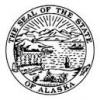Project Jukebox Survey
Help us redesign the Project Jukebox website by taking a very short survey!
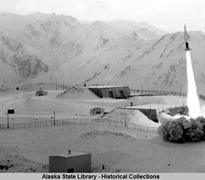 The Cold War between the United States and the Soviet Union was a significant part of 20th century history that had worldwide repercussions. Many consider the Cold War as lasting from March 5, 1946 when Winston Churchill made his famous speech about the descent of “an iron curtain” to December 24, 1991 when the Soviet Union officially dissolved. In 2014, 23 years after the end of the Cold War, Alaskans wanted to recognize this anniversary and celebrate the Alaskan part of the story. Alaska’s location made it a key strategic player in many elements of what happened during the Cold War, both secret and public. Missile sites and radar stations were established around the state to help protect American citizens. For
The Cold War between the United States and the Soviet Union was a significant part of 20th century history that had worldwide repercussions. Many consider the Cold War as lasting from March 5, 1946 when Winston Churchill made his famous speech about the descent of “an iron curtain” to December 24, 1991 when the Soviet Union officially dissolved. In 2014, 23 years after the end of the Cold War, Alaskans wanted to recognize this anniversary and celebrate the Alaskan part of the story. Alaska’s location made it a key strategic player in many elements of what happened during the Cold War, both secret and public. Missile sites and radar stations were established around the state to help protect American citizens. For 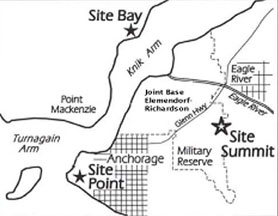 security reasons, much of what happened during the Cold War in Alaska was shrouded in secrecy. Enough time has now passed that security clearances have been lifted, top secret documents have been opened to the public, and the military and associated civilian participants are now comfortable talking about their activities.
security reasons, much of what happened during the Cold War in Alaska was shrouded in secrecy. Enough time has now passed that security clearances have been lifted, top secret documents have been opened to the public, and the military and associated civilian participants are now comfortable talking about their activities.
This project includes the personal stories of veterans who worked at Nike Missile Sites in Alaska, along with others talking about Alaska's role in the Cold War in general. The interviews were conducted at the conference "A Cold War, 2014 Alaska Conference and Nike Veterans Reunion" held in Anchorage, Alaska in September 2014. These stories tell us about Alaska's role in the Cold War and impacts on Alaska and Alaskans, but also opens doors to understanding what life was like at remote missile sites, the pressures that young soldiers were under, and the impact of the 1964 Earthquake on nuclear missiles in Alaska. This Cold War in Alaska Project Jukebox was completed in 2015. The information in this project reflects the context of the original creation date. Some information may now be out of date.
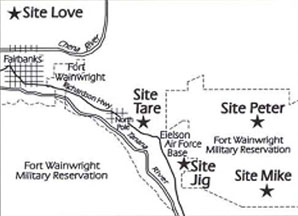
 Additional interviews were conducted in 2021 about the Stationary Medium (SM) Power Model 1A Nuclear Power Plant (SM-1A) at Fort Greely, Alaska that was operated by the U.S. Army Nuclear Power Program (ANPP) during the Cold War. It was Alaska's first and only nuclear power plant and remained in operation from March 1962 to March 1972. SM-1A supplied electrical power and steam heat to buildings on the military base, and was a test facility to see how nuclear power functioned in an arctic environment. Telling the history of the power plant and talking with former employees was the final stage of a project to decommission and dismantle SM-1A. These stories tell us about the day-to-day operations of the nuclear plant, life at a remote site, and the handling of potential hazardous substances. These interviews were conducted by Patience Stuart and Kevin Taylor of AECOM for the “Decommissioning and Dismantlement of the Deactivated SM-1A Nuclear Power Plant” project, which is part of the U.S. Army Corps of Engineers Deactivated Nuclear Power Plant Program, SM-1A, Fort Greely, Alaska (https://www.nab.usace.army.
Additional interviews were conducted in 2021 about the Stationary Medium (SM) Power Model 1A Nuclear Power Plant (SM-1A) at Fort Greely, Alaska that was operated by the U.S. Army Nuclear Power Program (ANPP) during the Cold War. It was Alaska's first and only nuclear power plant and remained in operation from March 1962 to March 1972. SM-1A supplied electrical power and steam heat to buildings on the military base, and was a test facility to see how nuclear power functioned in an arctic environment. Telling the history of the power plant and talking with former employees was the final stage of a project to decommission and dismantle SM-1A. These stories tell us about the day-to-day operations of the nuclear plant, life at a remote site, and the handling of potential hazardous substances. These interviews were conducted by Patience Stuart and Kevin Taylor of AECOM for the “Decommissioning and Dismantlement of the Deactivated SM-1A Nuclear Power Plant” project, which is part of the U.S. Army Corps of Engineers Deactivated Nuclear Power Plant Program, SM-1A, Fort Greely, Alaska (https://www.nab.usace.army.
People
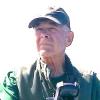 |
David Applebee |
David Applebee was a Navy Health Physicist and worked at the SM-1A Nuclear Power Plant at Fort Greely, Alaska from August 1969 to May 1971. He enlisted in the United States Navy as a hospital corpsman first class and served as a health physicist before receiving certification as a second class and then a first class operator. Prior to working at Fort Greely, David graduated from the Army Nuclear Power Program's school at Fort Belvoir, Virginia and worked as an environmental monitor on the SM... Read More |
 |
Roger Babler |
Roger Babler was born in Monticello Wisconsin. He graduated high school in 1959 and then completed two years training as an electronic technican at a technical school. He ran a small TV/radio repair shop as well as working at General Motors. He was drafted into the U.S. Army in 1964 and was sent to Alaska to serve at the Site Tare (A Battery A/2/562) Nike Missile Site outside of Fairbanks. He arrived on the same day as Ed Hansen. Roger worked on the plotting boards for the high power... Read More |
 |
Jim Biles |
Jim Biles was born in Florida in 1944 and currently lives in the Mojave Desert in southern California. His father was an Air Force Colonel. Jim entered the U.S. Army in 1962 when he was 17 years old via the ROTC Program at California State Polytechnic College in San Luis Obispo, California. He graduated in 1967 with a bachelors' degree in business administration. He was then commissioned in the Air Defense Artillery and attended their Officer Basic Course at Fort Bliss, Texas. He was... Read More |
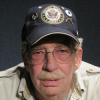 |
Bob Bishop |
Bob Bishop was born in San Francisco, California in 1944 and grew up in San Carlos, California. He joined the U.S. Army at age 18 after graduating from St. Francis High School in Mountain View, California. After basic training at Fort Ord, California he attended Military Police School in Fort Gordon, Georgia. Bob came to Alaska in December 1963 to work as a MP (Military Police) at the Site Tare (A Battery A/2/562) Nike Missile Site on the bluff overlooking Moose Creek, just outside of... Read More |
 |
Frank Faulkner |
Frank Faulkner was a Sergeant First Class E-7 and worked as an Operator, Electrician, and Shift Supervisor at the SM-1A Nuclear Power Plant at Fort Greely, Alaska in 1969 and 1970. He completed his training at Fort Belvoir, Virginia as part of the second class of 1964 with an electrical engineering specialization. He was assigned to Fort Greely to support the steam generator exchange in 1969. Frank made the 3,000-mile road trip to Alaska during the winter with his pregnant wife and their... Read More |
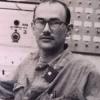 |
Billy "BJ" Foreman |
Billy “BJ” Foreman worked as a Specialist E6, Operator, and Instrumentation and Controls (I&C) Technician at the SM-1A Nuclear Power Plant at Fort Greely, Alaska between August 1969 and July 1971. His journey in the nuclear industry began as a student of nuclear engineering at Kansas State University. He left in 1966 and applied and was accepted to the Army Nuclear Power Program training program at Fort Belvoir, Virginia. After two years of intensive training, BJ, his wife, their two... Read More |
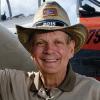 |
Lee Griffin |
Originally from Tennessee, Herbert Lee Griffin came to Alaska in December 1969 as the base munitions officer with the 5010th combat support group at Eielson Air Force Base near Fairbanks. Lee loved flying and hoping to be an Air Force fighter pilot he joined the military in 1968 as a direct commission in the U.S. Air Force ROTC out of Memphis State University. He flunked the flight physical, so went on to be a line loading officer. He first served with the Titan Missile group at Lowry Air... Read More |
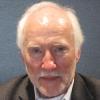 |
Joe Griffith |
Joe Griffith grew up in Oklahoma. In 1960, he entered the U.S. Air Force Academy and spent the next four years there. He then went into pilot training at Vance Air Force Base in Oklahoma. He served three tours in Vietnam and worked at the Pentagon in readiness assessment. In 1982, Joe came to Alaska to serve as Commander of the Air Force's 21st Wing, which had just failed an operational readiness inspection. Joe retired from the Air Force in 1984, but has continued to reside in Alaska. |
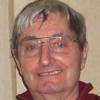 |
John Haile Cloe |
John Haile Cloe was born in Stafford County, Virginia in 1938. He graduated from the Virginia Military Institute in 1963, and went on to serve 29 years in the U.S. Army. As an infantry officer, he served two tours in Vietnam and was later assigned to the Infantry School at Fort Benning, Georgia. In 1970, he drove to Anchorage, Alaska in search of cooler weather and was assigned as Exercise Plans Officer for the Army. In 1973, John became the civilian Alaska Air Command historian at Elmendorf... Read More |
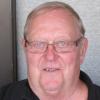 |
Ed Hansen |
Ed Hansen is from Beloit, Wisconsin. He graduated from South Beloit High School and then attended Northern Illinois University. He was drafted into the Army in 1964 and was sent to Alaska to serve at the Nike Missile Site Tare (A Battery A/2/562) outside of Fairbanks. He arrived the same day as Roger Babler. Ed was responsible for the target tracking radars. When their military service ended in... Read More |
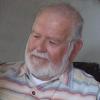 |
William "Bill" Hellums |
William E. "Bill" Hellums worked as a Specialist E6, Operator and Health Physicist as the SM-1A Nuclear Power Plant at Fort Greely, Alaska. He graduated from the Army Nuclear Power Program School in the second class of 1964. Following graduation, he moved to Alaska with his wife and two kids to work as a Process Control Technician and Health Physicist at SM-1A. His first assignment at Fort Greely was to help with the refueling process in 1965. Bill recalled, “working with poles about 20-foot... Read More |
 |
Ron Hogan |
Originally from Kentucky, Ron Hogan came to Alaska in 1960 after graduating from Western Kentucky University with his bachelor's degree. He followed his wife who he met in college who was originally from Fairbanks. Ron became a schoolteacher with the Bureau of Indian Affairs, teaching in Kotzebue and Elim, and then was high school principal in Kotzebue. Ron also has a degree from the University of Alaska in Fairbanks in secondary education, and a master’s degree from Western Kentucky... Read More |
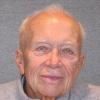 |
Sergei Khrushchev |
Dr. Sergei N. Khrushchev is the son of Nikita Khrushchev who was the Chairman of the Council of Ministers (Prime Minister) of the Soviet Union from 1957-1964. Dr. Sergei Khrushchev has his Soviet doctoral degree from the Ukrainian Academy of Science, a Ph.D. from the Moscow Technical University, and a master’s degree with distinction from the Moscow Electric Power Institute. From 1958-1968, he participated in the Soviet missile and space program, including work on cruise missiles for... Read More |
 |
Virgil Naylor, Sr. |
Virgil Naylor, Sr. is an Iñupiaq elder in Kotzebue, Alaska. He was born in 1936 in Noatak, Alaska, and grew up living a traditional subsistence lifestyle. He attended Mt. Edgecumbe school in Sitka, Alaska, and after graduation traveled around the state working as an electronic technician repairing the Air Force’s White Alice communication system. In 1965, he married his wife, Elsie, originally from Shishmaref, and they moved to Kotzebue. He continued to work for the White Alice station in... Read More |
 |
Jerald Peet |
Jerry Peet grew up in Alden, Iowa. After completing high school in 1966, he was drafted into the U.S. Army. After basic training he was sent to Fort Bliss, Texas for maintenance training on Nike missiles. He was sent to Alaska and stationed at Site Tare Nike Missile Site (A Battery A/2/562) near Fairbanks. He was responsible for the test systems on the missile guidance system. After Jerry left the Army, he went back to school for electronics to learn to work on TV and radios. After... Read More |
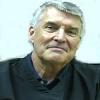 |
Robert "Bob" Raichle |
Robert "Bob" Raichle was born and raised in Westfield, New Jersey, just outside of New York City. He atttended Purdue University in Indiana, where he earned a degree in business and participated in the Army ROTC program. He graduated in 1965 as a comissioned second lieutenant in the US Army. In the spring of 1966, he was assigned to the Air Defense School in Fort Lewis, Texas and after three months obtained certification to work at a Nike missile site. From 1966 to 1968, Bob was stationed... Read More |
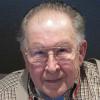 |
Howard Rice |
Howard was born in Ada, Oklahoma. His father served in the military so the family moved around a lot during Howard's childhood. By the time Howard was a senior in high school, his father had become professor of Military Science and Tactics for the ROTC program at West Texas University so Howard graduated from high school in Abilene, Texas. This is where he met his wife, Ruth. They married in September, 1957. Howard attended the University of Oklahoma and worked as a student engineer for a... Read More |
 |
Ruth Rice |
Ruth Rice is originally from Texas. Her father worked for a small retail automotive company and was transferred about every two years so she spent her childhood moving from town to town in west Texas. In 1942, when she was a teenager, her family was living in Abilene, Texas which is where she met Howard Rice. She and Howard married in September, 1957. Howard joined the U.S. Army and Ruth led the life of an Army wife, including time in Anchorage, Alaska while Howard worked at the Site Summit... Read More |
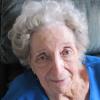 |
Dorothy Roggeveen |
Dorothy Roggeveen was born in 1929 in Detroit, Michigan. In 1948, at age 19, she joined the Women's Army Corps and worked in their dental lab. In 1951, she went to work for the U.S. Army Corps of Engineers and learned the administrative side of construction contracting. This is where she met her husband, Adrian Roggeveen of the Netherlands, who was an engineer specializing in bridge building. They married and moved to Okinawa, Japan and for the next 18 years worked on construction projects... Read More |
 |
Karl Santone |
Karl Santone worked as an Operator and Health Physicist at the SM-1A Nuclear Power Plant at Fort Greely, Alaska. He was accepted to the Army Nuclear Power Program’s school at Fort Belvoir, Virginia in the second class of 1959. The training program lasted about one year, with instruction from captains and majors who were mostly West Point graduates. Coursework involved physics, math, and technical subjects including electronics and mechanics. Following graduation, Karl worked as an instructor... Read More |
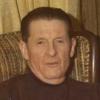 |
Ransom Tony Schultz |
Ransom Tony (R.T.) Schultz came to Alaska in 1938, the same year he bought his first plane and obtained his pilot's license. He began flying for Star Airlines (later Alaska Airlines) in 1940, and in 1950 was chosen as their first chief bush pilot. He also flew in Alaska for Northern Consolidated Airlines, Wien Airlines, Interior Airlines, and as a bush pilot for the Bureau of Land Management. Tony also worked with Hawkins & Powers, who had the forest firefighting contract with the Bureau... Read More |
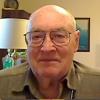 |
George Shaw |
George Shaw worked as a Civilian Operator and Shift Supervisor at the SM-1A Nuclear Power Plant at Fort Greely, Alaska between 1963 and 1968. He was one of a handful of civilian employees at SM-1A. George was born and raised in Alaska, and had been working as an engineer on tug boats in Whittier, Alaska before taking a job as an operator at the conventional power plant at Fort Greely in June 1962. George's extensive professional experience and time at Fort Greely led to an invitation to... Read More |
 |
Mead Treadwell |
Louis Mead Treadwell II was born in New Haven, Connecticut in 1956. After earning a bachelor's degree in history from Yale University, he took an internship with Walter Hickel's campaign for governor of Alaska. This began his long political career in Alaska. Treadwell is a member of the Republican Party and served as the 11th Lieutenant Governor of Alaska from 2010 to 2014 during the administration of Governor Sean Parnell. In 2006, he was appointed by President George W. Bush to serve as... Read More |
 |
Robert Wallace |
Robert (Bob) Wallace grew up in Kansas and earned his Bachelor’s degree in History from Ottawa (Kansas) University in 1966 and a Master’s degree in Political Science from the University of Kansas in 1968. He served in the U.S. Army from 1968-1970, led long-range reconnaissance patrol teams of Company E, 75th Rangers in Vietnam and was awarded the Combat Infantryman’s Badge, two Bronze Stars with “V,” and three Air Medals. In 1970, Bob moved to Washington, D.C., and served as an... Read More |
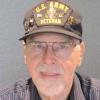 |
George Wallot |
George Wallot was born in 1942 and grew up in Mount Vernon, Ohio. He enlisted in the U.S. Army in 1962 after studying engineering for two years at Ohio State University. Upon joining the Army, he applied his interest in electronics and attended a twelve-week course in electronics entry with a radar focus at Fort Monmouth, New Jersey. He then did six more months of training on the Nike Hercules missile tracking radar and associated test equipment at Redstone Arsenal in Huntsville, Alabama. He... Read More |


